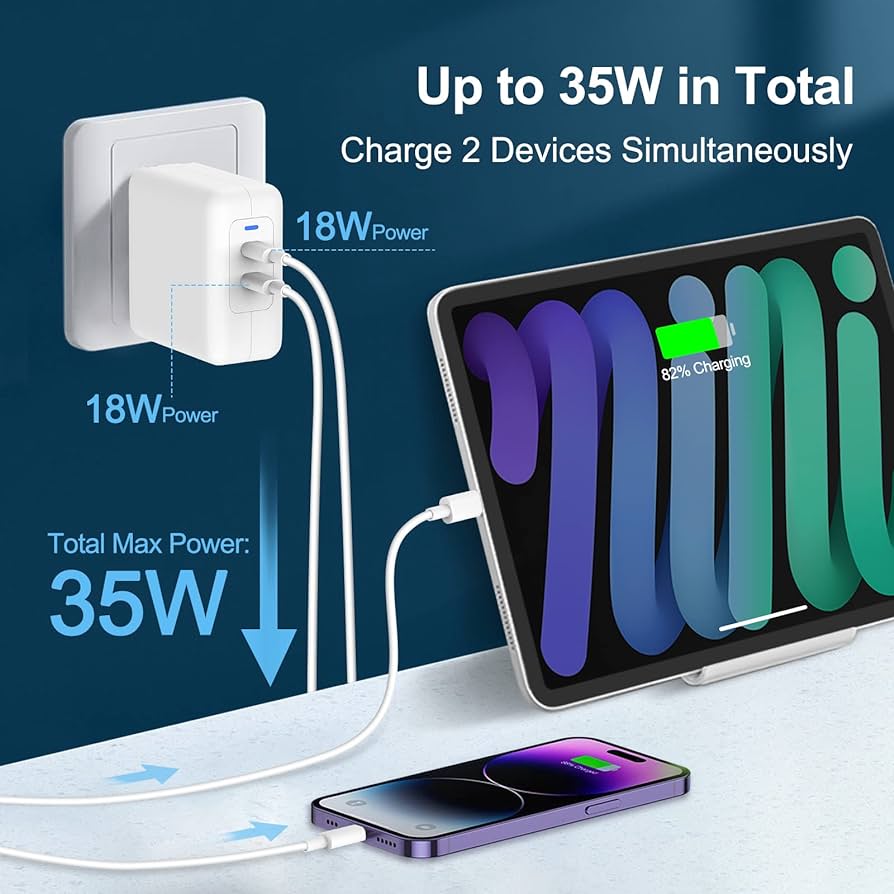In today’s fast-paced digital world, where our smartphones, tablets, laptops, and other gadgets are essential to our daily lives, having a reliable and efficient charging solution is crucial. That’s where charging blocks come into play. Charging blocks, also known as wall chargers or power adapters, are the unsung heroes behind keeping our devices powered up and ready to go. In this comprehensive guide, we’ll delve into the world of charging blocks, exploring the different types, how they work, the benefits they offer, and much more. Let’s dive in and unlock the power of charging blocks!
I. Introduction
In our digitally-driven era, where staying connected is paramount, charging blocks have become an indispensable accessory. Whether you’re a tech enthusiast, a frequent traveler, or a professional constantly on the go, having a reliable charging block ensures that your devices stay powered up whenever you need them. In this article, we will take a deep dive into the world of charging blocks, exploring their types, functionality, benefits, and much more. By the end, you’ll have all the knowledge you need to make an informed decision when choosing the right charging block for your needs.
II. Understanding Charging Blocks
Explaining the basic concept of charging blocks:
Charging blocks, also referred to as wall chargers or power adapters, are essential accessories for powering up various electronic devices. They are compact devices that convert AC (alternating current) from a wall outlet into DC (direct current), which is used by smartphones, tablets, laptops, and other gadgets. Charging blocks typically consist of a power plug and one or more USB ports for connecting charging cables. These ports may vary in terms of power output, compatibility, and design, catering to different devices and user needs.
Differentiating between charging blocks and other charging accessories:
It’s essential to differentiate charging blocks from other charging accessories such as power banks and wireless chargers. While power banks are portable batteries that store power for on-the-go charging, wireless chargers use electromagnetic induction to charge devices without the need for a cable. Charging blocks, on the other hand, are primarily designed for stationary use, providing a stable and reliable power source when connected to a wall outlet. They are the most common and convenient way to charge devices at home, in the office, or in public places.
III. Types of Charging Blocks
Charging blocks come in various types, each catering to different charging needs and preferences. Let’s explore the different types of charging blocks available in the market:
USB Charging Blocks:
USB charging blocks are the most common type of charging blocks available. They typically feature one or more USB-A or USB-C ports for connecting charging cables. USB-A ports are the traditional USB ports, while USB-C ports are the newer, more versatile standard. USB charging blocks are compatible with a wide range of devices, including smartphones, tablets, smartwatches, and more. They come in various shapes, sizes, and power outputs, catering to different devices and charging requirements.
Wireless Charging Blocks:
Wireless charging blocks, also known as wireless charging pads or stations, offer the convenience of cable-free charging. They use electromagnetic induction to transfer power from the charging block to the device, eliminating the need for a physical cable connection. Wireless charging blocks are compatible with devices that support wireless charging, such as certain smartphones and earbuds. They are ideal for desktops, nightstands, and other stationary locations where you can simply place your device on the charging pad to start charging.
Multi-port Charging Blocks:
Multi-port charging blocks are designed for users who need to charge multiple devices simultaneously. They feature two or more USB ports, allowing you to charge multiple devices from a single power outlet. Multi-port charging blocks are perfect for families, offices, and travel, where several devices need to be charged at once. They come in various configurations, offering different combinations of USB-A and USB-C ports, as well as different power outputs for each port.
You read also more : pixel 3a cases
IV. How Charging Blocks Work
Understanding the inner workings of charging blocks is essential to know how they function and how they can efficiently charge your devices. Let’s take a closer look at how charging blocks work:
Explaining the inner workings of charging blocks:
Charging blocks convert the alternating current (AC) from a wall outlet into direct current (DC), which is used by electronic devices. They contain internal circuitry that regulates the voltage and current to provide a stable and safe charging experience. When a charging block is plugged into a wall outlet and a device is connected to it, the charging block delivers the appropriate amount of power to the device, allowing it to charge quickly and efficiently.
You read also more : free 5g government phones
Discussing the technology behind fast charging:
Many modern charging blocks feature fast charging technology, which enables devices to charge at a much faster rate than conventional charging methods. Fast charging technology varies depending on the device and the charging block used. One common fast charging technology is Qualcomm Quick Charge, which is compatible with many Android smartphones. Another popular fast charging technology is USB Power Delivery (USB PD), which is commonly used with USB-C charging blocks. Fast charging technology works by increasing the power output of the charging block, allowing devices to charge at higher speeds without damaging the battery.
V. Factors to Consider When Choosing a Charging Block
When choosing a charging block, there are several factors to consider to ensure that you select the right one for your needs. Let’s explore the key factors to consider when choosing a charging block:
Output Power: Understanding the importance of power output:
One of the most critical factors to consider when choosing a charging block is the output power. Output power is measured in watts (W) and determines how quickly a charging block can charge a device. Higher output power results in faster charging times. When selecting a charging block, it’s essential to choose one with an output power that is compatible with your device’s charging requirements. For example, smartphones typically require a charging block with an output power of 10-12W for standard charging and up to 18W for fast charging.
Compatibility: Ensuring compatibility with devices:
Another essential factor to consider is compatibility. Not all charging blocks are compatible with all devices. Some devices require specific charging block specifications to charge properly. When choosing a charging block, make sure it is compatible with your device’s charging requirements, including the voltage, current, and connector type. Most modern charging blocks are equipped with multiple USB ports, allowing you to charge different devices simultaneously. However, it’s essential to ensure that the charging block you choose is compatible with the devices you plan to charge.
Portability: Considering size and weight for on-the-go charging:
Portability is another factor to consider when choosing a charging block, especially if you plan to use it while traveling or on the go. Portable charging blocks are compact and lightweight, making them easy to carry in a bag, purse, or pocket. When selecting a portable charging block, consider the size and weight, as well as any additional features such as foldable prongs or a built-in cable for added convenience. Keep in mind that while smaller charging blocks are more portable, they may have a lower power output, resulting in slower charging times.
Safety Features: Exploring overcharge protection and surge protection:
Safety is paramount when it comes to charging devices. Many modern charging blocks are equipped with built-in safety features to protect against overcharging, overheating, and power surges. Look for charging blocks that feature overcharge protection, which prevents the battery from being overcharged and damaged. Surge protection is also essential, as it protects your devices from voltage spikes that can occur during power surges. When choosing a charging block, prioritize safety features to ensure a safe and reliable charging experience.
VI. Benefits of Using Charging Blocks
Charging blocks offer a wide range of benefits that make them an essential accessory for powering up your devices. Let’s explore some of the key benefits of using charging blocks:
Fast Charging: Explaining the advantage of quick charging times:
One of the most significant benefits of using charging blocks is fast charging. Charging blocks with fast charging technology can significantly reduce the time it takes to charge your devices, allowing you to get back to using them more quickly. With fast charging, you can top up your device’s battery in a matter of minutes, giving you peace of mind knowing that your device is always ready when you need it. Whether you’re in a hurry or need to top up your device’s battery quickly, a charging block with fast charging capabilities is a must-have accessory.





